Further, you can find an LFO knob where you can adjust the frequency of the LFO of your patch in real time and by pressing SHIFT, you can also change the amount of it. On the complete right side, you have for me an amazing feature of the AS-1 Synthesizer, an FX ON and OFF button. Many Synthesizers comes today with tonnes of effects processing on it and you can’t hear the real synthesis quality of your patch. OK, these patches with effects on it sound great but if you love to tweak the analog engine, you will love this button. By pressing it, you bypass all the effects of the device. In my opinion, a great job Pioneer DJ and Dave Smith to include such a rare feature on this instrument.
Next, you have the play section of the AS-1 Synthesizer. Starting here with the two buttons on the left side for the octave down and up. By pressing shift, you can also go down and up in semitones. Further, you have the sequencer section with two main buttons for record and play. By pressing the SHIFT button, you can also activate additional features like holding the sequence. There are two different ways to work with the step sequencer. Either you program inside the hardware or you switch to the free PC/Mac editor. For me personally, I prefer the editor over the hardware because you have a better overview of your sequences.
Nonetheless, the way how you can program a sequence in the AS-1 is simple and great. Just press record and play your notes in. When you press the hold button, you can activate a tie inside your sequence and with the arp button you can also put rest in it. In total, you can program 64 steps in the sequencer and in one project, you can save up to 495 sequence patterns in five user banks. For each sequence, several parameters will be saved: Pitch per step, velocity per step, slew on of per step and the number of the steps. In my opinion, a cleverly designed, and easy-to-use sequencer with a missing feature.
Unfortunately, the AS-1 has no automation capability for the sequencer. It is not possible to record parameters in the sequence. That would make the whole device even more attractive to electronic musicians. Next, you have an arp section where you can active the arpeggiator and also put it in the hold mode. 5 different arpeggiator styles can be chosen in the menu section or in the PC/Mac editor. Then right next to the arp buttons, you find a BPM knob which goes from 30 to 250. And as final, you have on the right side, a tap tempo button that can be also used via the SHIFT button as a restart button for the sequencer.
On the next page, I continue with the sound engine of the TORAIZ AS-1 Synthesizer
Sound engine
As already mentioned, the engineering team of Dave Smith Instrument designed the synth engine for the AS-1 and is a complete mono-voice of the well-known Prophet 6 analog polyphonic Synthesizer. Since the synth core is identical to the Prophet 6, one can say that the AS-1 is the monophonic version of this famous instrument. Even if this is right at first sight, both are quite different in the feature list.
The synth engine features two voltage controlled continuously-variable oscillators best-known from the Prophet 6. Each oscillator includes a frequency parameter that goes from C0 to C5. The starting point of each oscillator in the AS-1 is an excellent sounding saw wave. From that point, you can shape the saw wave to right to a triangle till a perfect pulse wave. To get more harmonics and rich sounds, oscillator 1 features also a sync feature. Oscillator 2 comes also with a fine tune feature that can go in the low-frequency mode. On top of that, you can activate a key follow feature.
What our friends of Sonicstate will love, each oscillator includes pulse width modulation. Unique for Dave Smith Instruments developed Synthesizer is the slop feature that you can find also inside the AS-1 Synthesizer. This feature allows the oscillators to drift out of tune a bit from time to time. This emulates a bit the feeling of old analog Synthesizers. An excellent feature in my opinion that brings back this charm of analog synths.
All two signals go than to a mixer where you can find also a sub oscillator or sub level to make the oscillators even fatter. An addition noise generator brings some dirty character to the basic sound. This complete sound block goes than to the filter section. The synth engine of the AS-1 is powered by a 4-pole low-pass filter which can self-oscillate and by a 2 pole high-pass filter. Here is certainly a good feature is that you can use both filters separately from each other. So you don’t have to make the decision which one you want to use.
This combination of both filters offers you a nice range of sonic possibilities. The filter can be modulated by a quite simple ADSR envelope and it can be triggered with velocity. Also interesting to mention is that you can change the key amount routing from full to half. A clever feature for the filter in my opinion.Coming next to the envelope section where you can find two envelopes for the filter and amplifier. Unfortunately, there is only one envelope for the filter that limited a bit of how you work with both filters. Velocity is a powerful feature inside the AS-1 because you can route velocity to the amount of the amplifier envelope. A modulation section is an essential and important section inside a modern Synthesizer.
Without a modulation section, a synthesizer would be rather boring. As you know, the Pioneer DJ synth is based on the classic Dave Smith Instruments Prophet 6 Synthesizer and thus the modulation is somewhat simple. The engine is powered by a classic LFO and is adjustable with a frequency and amount. The LFO includes fives different waveforms (triangle, rev. saw, saw, square and random) and it can be also synced. Even if the mod section is quite simple, the reverse saw and random waveform offer quite interesting modulation results. The LFO can be here either routed to the frequency of the oscillator 1/2, PWM 1/2, VCA or to the two filters. The routing to the filters is here limited to the cutoff frequency. Modulations on the resonance amount are not possible.
Budget Synthesizers often come without an aftertouch-capable keyboard and thus do not have such features. The situation is different here and the AS-1 can score well. An aftertouch feature is here included in the touch keys which can be routed to several parameters. Per example, you can map multiple parameters ( Osc 1 / 2 frequency, LFO amount, VCA, LP / HP) at once. A powerful feature in my opinion because it gives you an additional sphere for musical expression. As already written at the beginning, the slider is very cool and modular usable. Users can map it with one or more parameters at once. Per example, you can route the lowpass filter and effects 1 mix to the slider. This gives you the possibility to control both parameters at the same time. A very creative function especially for live performance when you want to change the sound radically in seconds. An additional glide with different modes gives you some more options for creating own sounds.
Effects section
Often budget Synthesizers have no effects but are pure analog synths. Pioneer DJ goes here another direction and includes a nice selection of effects from the Dave Smith Instruments Prophet 6. It includes two separate slots where you can in each different digital effects. In effect slot number one, you can find a bucket brigade delay, a newly developed distortion, and a ring modulator. In the menu, you have for each effect three different settings to adjust. Important to know is that you can load only one effect per slot. In the second slot, you have a nice sounding chorus and three different phaser effects. Even if the effects are produced digitally, they sound very valuable and all have a nice character. The chorus plus the phaser effects give you a nice playground for creating fatter sounds, the ring mod, and new distortion offers you a wide range of harsh and dirty sound design options. They fit above al very nicely to the entire synth engine.

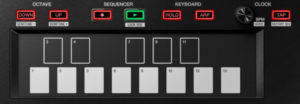

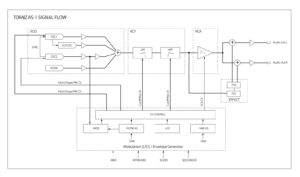
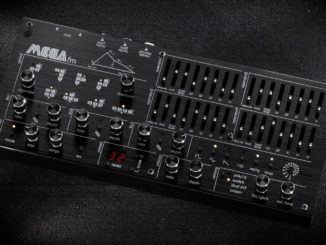
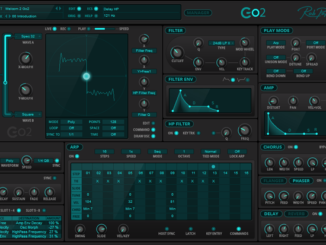
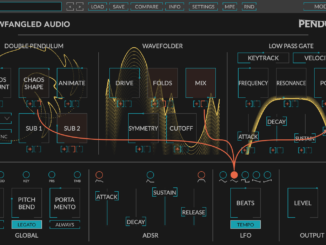
abandonware by pioneer….terrible midi sync bug means u can only really use this as a sound module